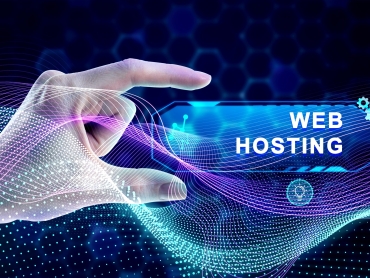Every time you browse a website, stream a video, send an email, or make an online purchase, you’re relying on web protocols and technologies. They are the invisible forces that define how devices, servers, and applications communicate. Without them, the internet as we know it would not exist.
In 2025, the digital world is not just about creating a website—it’s about ensuring security, speed, and scalability across millions of devices, from smartphones and tablets to IoT sensors and cloud data centers. Web protocols and technologies act as the foundation that makes this possible.
This guide explores the key web protocols, emerging technologies, best practices, and future trends that every developer, business owner, and digital strategist should understand.
What Are Web Protocols and Technologies?
Web Protocols are standardized rules that define how data is transmitted and received across the internet.
Web Technologies are the frameworks, tools, and systems built on top of these protocols that power websites, applications, and digital platforms.
In simpler terms:
Protocols = language of the internet.
Technologies = tools we use to build digital experiences.
Core Web Protocols You Use Every Day
1. HTTP and HTTPS
HTTP (HyperText Transfer Protocol): The foundation of data communication on the web.
HTTPS (HyperText Transfer Protocol Secure): A secure version that uses TLS/SSL encryption to protect data during transfer.
Why it matters:
SEO: Google ranks HTTPS-enabled websites higher.
Security: Prevents data theft and man-in-the-middle attacks.
Performance: HTTP/2 and HTTP/3 provide faster page loading.
2. DNS (Domain Name System)
Think of DNS as the phonebook of the internet. Instead of remembering IP addresses (like 192.168.1.1), users type domain names (example.com). DNS translates the name into the correct IP.
Performance impact: Slow DNS resolution increases website loading time. Using fast DNS providers (like Cloudflare, Google DNS, or OpenDNS) improves speed.
3. TCP/IP (Transmission Control Protocol/Internet Protocol)
TCP: Ensures reliable delivery of data packets.
IP: Routes the data to the correct destination.
Together, TCP/IP is the foundation of all internet communication.
4. FTP (File Transfer Protocol)
Used to upload and download files between a client and a server.
Still relevant for website maintenance and backup solutions.
Alternatives like SFTP (Secure FTP) and FTPS add encryption for better security.
5. SMTP, IMAP, and POP3
SMTP (Simple Mail Transfer Protocol): Sending emails.
IMAP (Internet Message Access Protocol): Syncing emails across devices.
POP3 (Post Office Protocol): Downloading emails to one device.
These protocols power email communication, which remains vital for business and personal use.
6. WebSockets
WebSockets allow real-time communication between clients and servers.
Examples:
Chat applications
Stock trading dashboards
Online gaming platforms
Unlike HTTP, which requires constant requests, WebSockets keep an open connection for instant updates.
Emerging Web Technologies Shaping 2025
1. HTTP/3 and QUIC
HTTP/3: The newest version of the web protocol.
QUIC (Quick UDP Internet Connections): A protocol developed by Google that speeds up connections.
Benefits:
Faster loading for mobile users.
Better performance under poor network conditions.
2. WebRTC (Real-Time Communication)
WebRTC enables voice, video, and file sharing directly in browsers without extra plugins.
Used in:
Zoom, Google Meet, Microsoft Teams
Customer support chat & video systems
Telemedicine platforms
3. GraphQL
A modern alternative to REST APIs.
Instead of retrieving too much or too little data, GraphQL allows clients to request exactly what they need.
Increases efficiency in mobile apps and web services.
4. Progressive Web Apps (PWAs)
PWAs blend the speed of websites with the experience of mobile apps.
Work offline.
Send push notifications.
Installable on mobile home screens.
5. Edge Computing
With billions of IoT devices, edge computing brings data processing closer to users, reducing latency.
Example:
Smart city sensors analyzing traffic data in real time.
Retail stores using edge servers for instant checkout.
The Role of Web Protocols in Website Speed and Performance
| Factor | Protocol/Technology | Impact on Speed |
|---|---|---|
| Page Loading | HTTP/2, HTTP/3 | Multiplexing reduces latency |
| DNS Lookup | DNS | Faster resolution = quicker site access |
| Security | HTTPS + TLS 1.3 | Faster + safer encryption |
| Real-Time Updates | WebSockets | Eliminates request delays |
| Content Delivery | CDN + Edge Computing | Delivers data closer to users |
Security Protocols That Protect the Web
Security is a non-negotiable part of web technologies.
Key Security Protocols:
TLS/SSL: Encrypts communications (used in HTTPS).
SSH (Secure Shell): Secure server access.
OAuth 2.0: Manages secure user authentication.
S/MIME (Secure/Multipurpose Internet Mail Extensions): Encrypts and signs emails.
Why It Matters for Businesses
Prevents hacking and fraud.
Builds trust with customers.
Complies with data protection laws (GDPR, HIPAA, etc.).
Impact on SEO, Conversions, and Business Success
1. SEO Rankings
HTTPS = higher Google rankings.
Fast-loading sites = better SEO visibility.
2. User Experience
Mobile users demand speed + reliability.
Protocols ensure smooth navigation.
3. Conversion Rates
Studies show 1-second delay = -7% conversion rate.
Secure + fast sites increase sales and trust.
Best Practices for Using Web Protocols and Technologies
Always enable HTTPS with modern TLS versions.
Optimize DNS resolution with fast providers.
Use CDNs for global performance.
Choose HTTP/2 or HTTP/3 over HTTP/1.1.
Implement WebSockets for real-time apps.
Regularly test speed using Google PageSpeed Insights and Lighthouse.
Future Trends in Web Protocols and Technologies
AI-Optimized Web Performance – smarter caching, predictive loading.
Decentralized Web (Web3) – blockchain-based protocols.
5G Integration – faster mobile browsing.
Quantum-Safe Encryption – preparing for future computing threats.
Conclusion: Building the Future of the Web
Web protocols and technologies may be invisible to the average user, but they define speed, security, and user experience on the internet. From HTTP/3 and GraphQL to edge computing and WebRTC, staying ahead of these innovations is not optional—it’s essential for digital success.
Businesses that embrace these advancements gain a competitive edge in SEO, conversions, and trust. Developers who master them build faster, more secure, and future-ready platforms.
The internet evolves constantly—but its foundation remains built on the power of web protocols and technologies.








